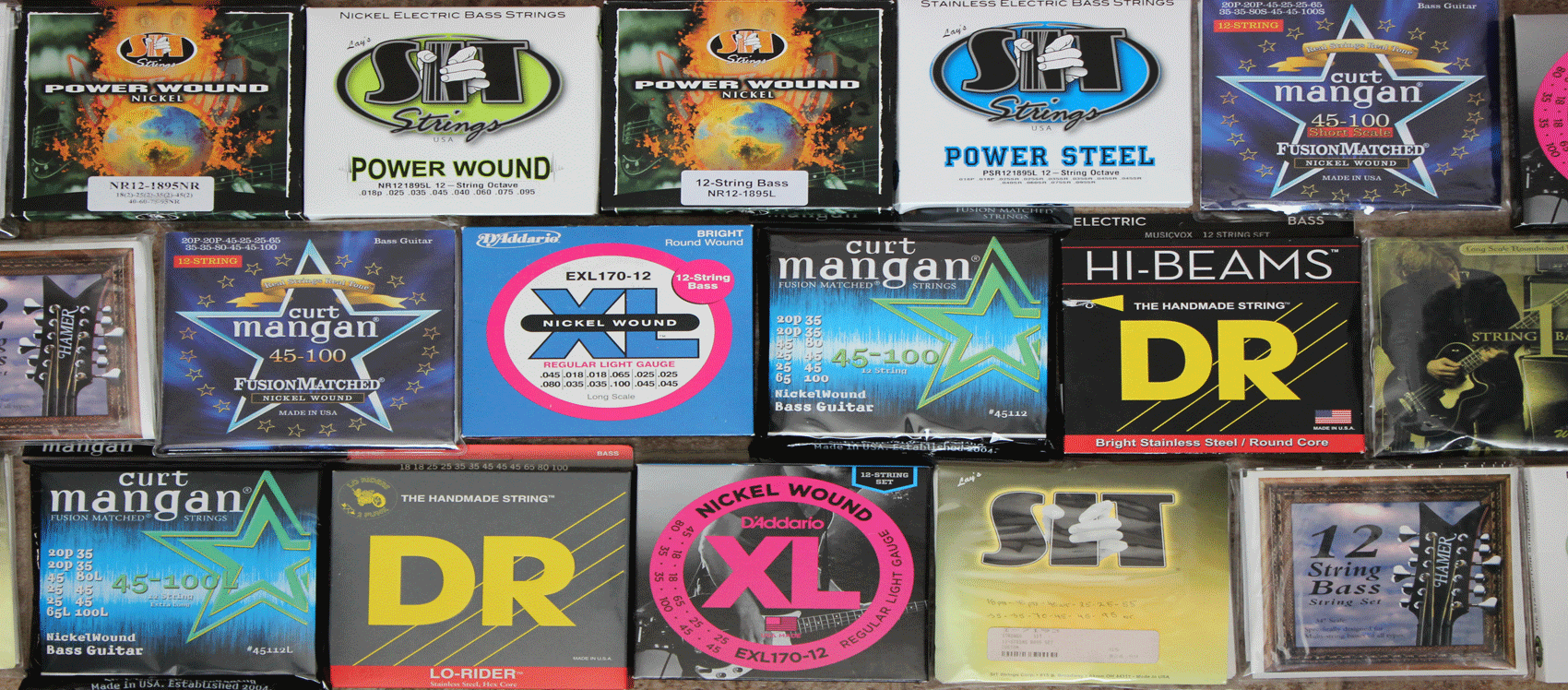Changing Strings On Your 12-String Bass
Tips to make string changing faster and easier
Tired of twisted octave pairs and disorderly arrangements?
Use an old String as a guide
When changing strings I always remove one group of three strings at a time. This simple trick makes string changing easier: Take a low-octave E string that has outlived its usefulness. Cut it to a length of about three inches. It should fit through the ball ends of most brands and gauges of strings, but if it's too snug the low A string will work just fine.
Use this guide to line up the new strings as you change them. I always start with the E's and work my way across the neck. After the entire 12 strings have been lined up and changed just remove the guide.
You can also cut the guide a bit shorter, leave it in place and then put a 90° bend in it. This way the new strings will be "locked" into place between the ball and the bend.
Lubricating the Nut
"Many stringed-instrument players experience tuning issues that are caused by a variety of variables. One factor in the tuning equation is the nut. The string grooves in the nut are sized accordingly to the gauge of the strings applied at the factory. Usually, although not always, keeping with these exact gauges will reduce the likelihood of tuning problems concerning the nut. However, most players over time will begin to experiment with a variety of gauges to find what suits their needs best. Since most manufacturers use lighter gauge strings, most changes in gauge by the player will be towards the heavier side. This causes a pinching of the strings at the nut. This pinching can produce a 'pinging' sound when tuning the instrument and cause the pitch of the string to jump dramatically during tuning. This can make it difficult to tune the instrument, especially when you have 12 strings to go through."
"Here's a cheap and reliable solution. Carefully pull each string out of its groove in the nut one at a time. Apply a small amount of regular Chap-Stick to the groove with a small flat-head screwdriver. Wipe away any excess and gently return the string to its groove. The Chap-Stick will not corrode the string and will provide ample lubrication for the life of the string. You should repeat this procedure each time you change strings."
"Having the nut re-grooved to fit new string gauge specifications is not advisable unless you are an experienced player and know for certain what gauges you will be sticking with. Even after having this modification done the Chap-Stick trick is still a useful tip." - Philip Snyder
Adjusting string spacing
"For those of you who like the idea that the octave strings should be spaced a little further away from the fundamental strings here's one you can try and it doesn't cost a thing! Take a black medium gauge pick. Gibson makes them. Cut it into four tiny squares about 1/8" x 1/8". Prying your octaves away from your fundamental string with you fingers near the bridge, gently wedge the pick-piece / shim in between the saddles until it is just below the surface. Voilà! Instant wide string spacing - and with no ugly side effects!"
"For those of you who like the idea that the octave strings should be spaced a little further away from the fundamental strings here's one you can try and it doesn't cost a thing! Take a black medium gauge pick. Gibson makes them. Cut it into four tiny squares about 1/8" x 1/8". Prying your octaves away from your fundamental string with you fingers near the bridge, gently wedge the pick-piece / shim in between the saddles until it is just below the surface. Voilà! Instant wide string spacing - and with no ugly side effects!"
"After this modification the string spacing as measured at the bridge saddles from string center to string center measures 3/32" between each pair of octave strings, 5/32" between each fundamental string and its nearest octave string, and 11/32" between each course of three strings." - Philip Snyder
Tuner Maintenance
"When changing strings it's a good idea to check the ring nuts on your tuners as well as the screws on the back. It's due to the massive tension as well as the vibration, and I'm amazed at how loose these things often are. I also tighten the screws on the string retainer at the bridge." - Bob Nimmo
